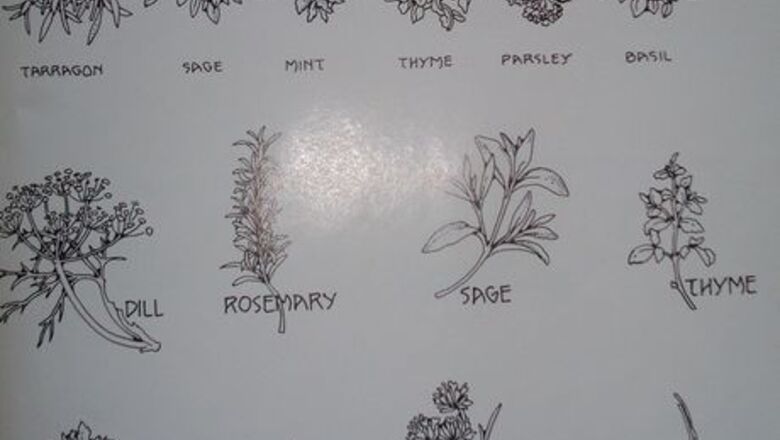
views
Researching and Finding Inspiration
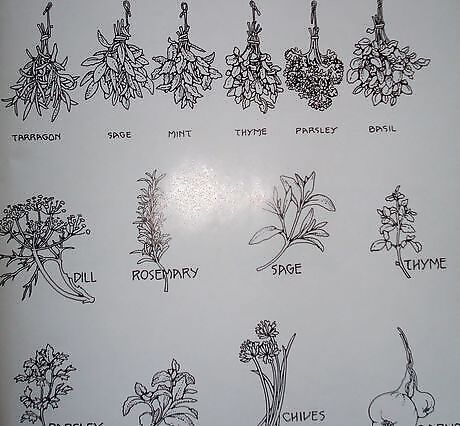
Study common herbs. Each plant has its own unique structure and is widely recognized by shape and color.
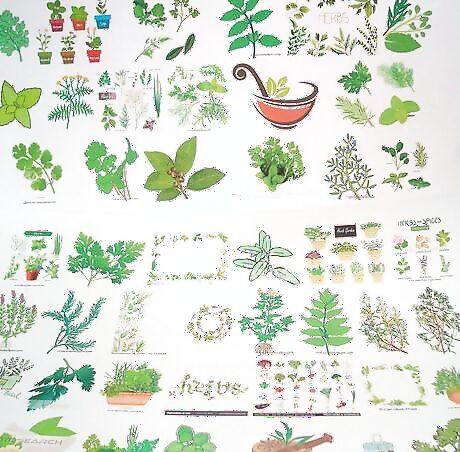
Find the differences in each herb's leaves. Doing quick sketches of them will help you see how different they are. Look, with a discerning eye, at the various types.
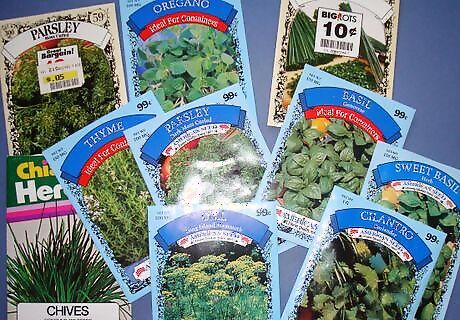
Get seeds in packets. Seeds appearing in stores make us excited for planting. At the dollar store the displays are prominent, the packs are cheap, so get a few, if only for the illustrations on the front.
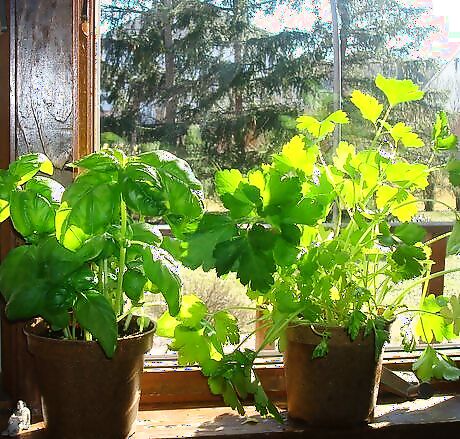
Look at actual herb plants. If you can get one or two from the supermarket, use them as models.
Fix up your work space. In addition to the usual drawing and painting equipment, lay out the seed packets and other references for viewing as you work. Get inspired by looking at pictures. See how others have done it. Google: Watercolors of window herb gardens. Study photos of actual arrangements. Google: Free stock pictures of window gardens.
Plan your design. How do you want your garden to look? A large, sunny window is a given. Will the garden be small, in individual pots or will the herbs be contained in a single planter box?
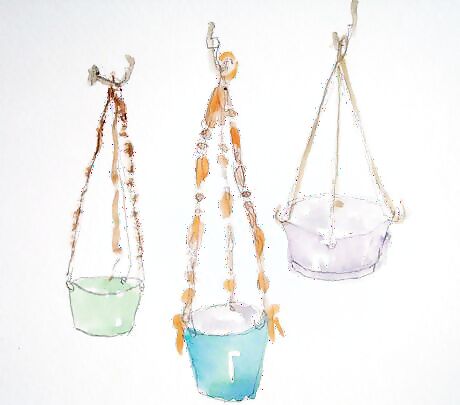
Consider adding a hanging planter or two. This offers another way to use the space. Go "retro" by having a pot or two coming down from above on a braided or macramé hanger.
Drawing and Sketching
Get an 11" X 14" piece of watercolor paper from a pad. Decide which orientation you want, sideways or tall.
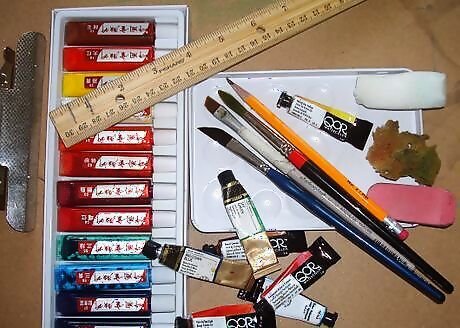
Assemble your other supplies. An ordinary pencil, eraser, ruler, watercolors, support board, water bucket and tissues. Place all this at a work space that allows you to spread out and not be disturbed while you work.
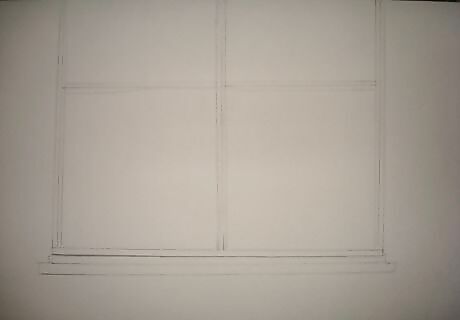
Decide what you want your scene to show. Break up the paper's blank space by making the window the most prominent feature. It will most likely take up most of the center of the composition.
Use a ruler. A window's lines should be exact.
Find a box for a template. For convenience, drawing around a tissue or other another box or rectangular piece of cardboard can give you a three sided shape for the window with hardly any measuring.

Break up the space within the window. Make any type of divisions you prefer. Looking at pictures of the various types is helpful, too.
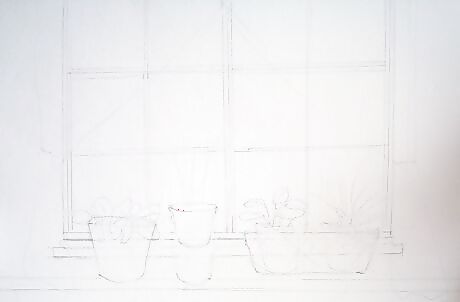
Sketch flower pots in front of the window. Arrange them in groups or in a row. Stagger them, have some on different levels, hang some in rigid holders screwed to the side moldings. Let your imagination guide you. Doing a long planter box has advantages. The plants side by side can be touching for a lavish feel. Remember, adding accessories like little stakes with the plant's variety on it can be a fun way to distinguish one from another.
Try eye catching containers. Unusual clay pottery, old teapots, or the like can add whimsy to a garden. Keeping the garden very simple is fine, too. A single pot or two can be enough.
Painting the Scene
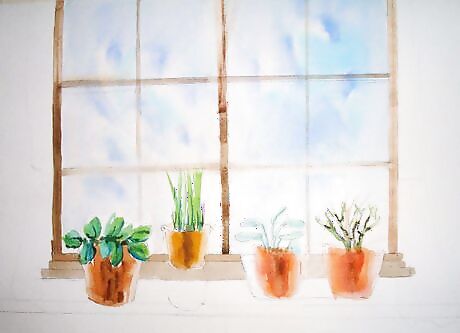
Paint the scene any way you desire. Begin where you wish. Starting with the plants and making them the center of interest is a typical way to go.
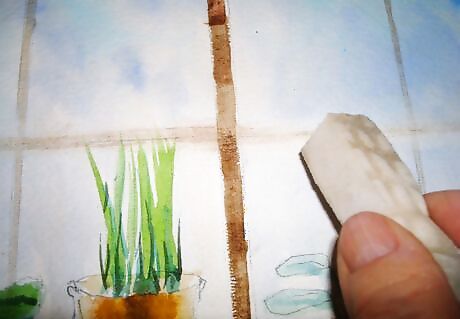
Have a flat brush for window moldings. On a scrap page, practice control of the brush. Keep the brush well filled so the line flows. If you make a mistake, simply dab it with a tissue or wipe it away using a piece of a white eraser pad. Allow to thoroughly dry before doing over.
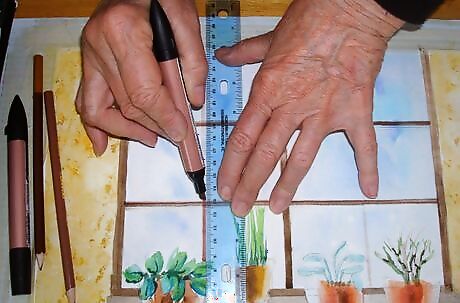
Using a marking pen and ruler will insure clean division lines. Forgo the brush entirely, if you wish.
Decide on how much of the outdoors you want to show. Views out the window can add interest. Birds on branches on a tree or shrub, other vague buildings or just a quick neutral, streaky wash of blue are all possibilities.
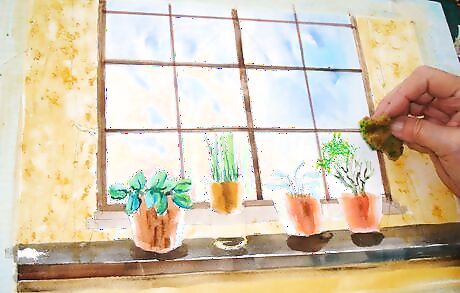
Do lacy shapes with a natural sponge. Plants like the fronds of dill or texture on the wall paper can be done by touching a damp sponge into undiluted paint and stamping with it.
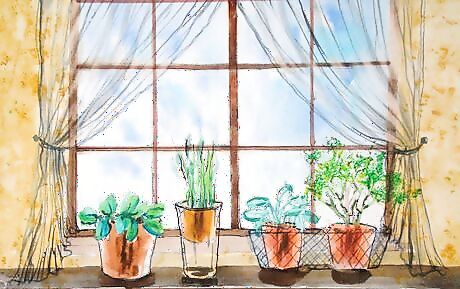
Add curtains if you want them in your painting. If you do them as opaque fabric, they will add splashes of color and texture. They can be pushed aside or bracketed to allow for maximum light to enter the window. Doing them as sheers brings attention down to the herbs.
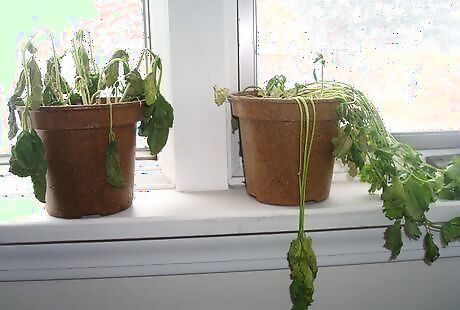
Do not despair if your thumb is less than green. Painting a subject can preserve it for posterity. Bringing the plants of summer indoors is fun. Doing a painting can be a substitute for the real thing. If your day needs a boost, consider doing a painting of herbs. Those little plants pack a punch and do triple duty; they are a thing of beauty, add flavor to a recipe and spice to our lives.Herbscatswindow.jpg



















Comments
0 comment